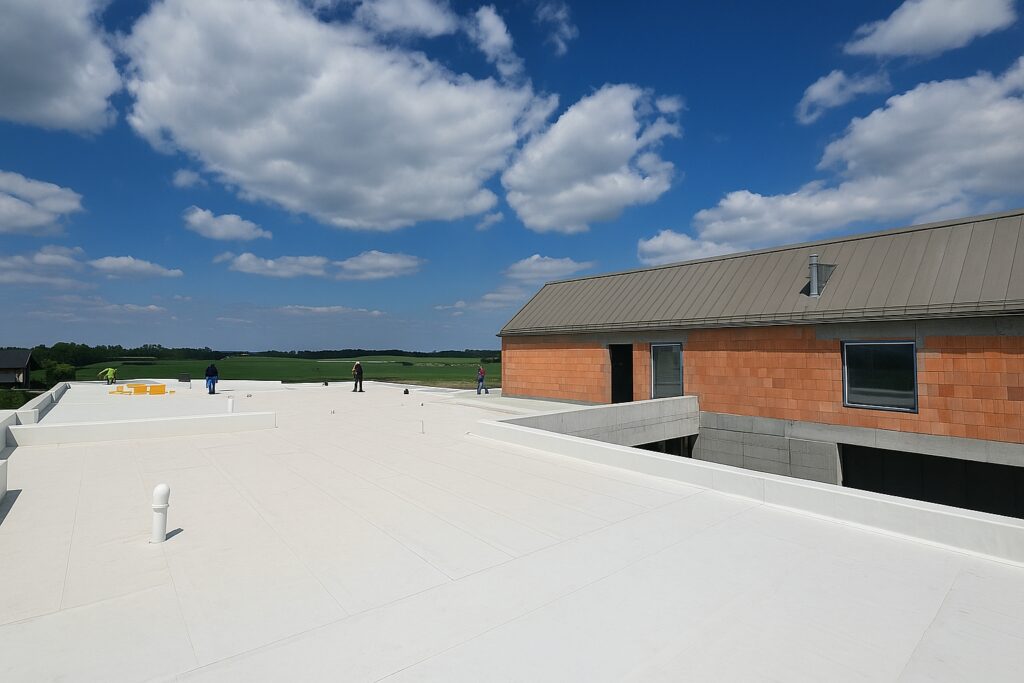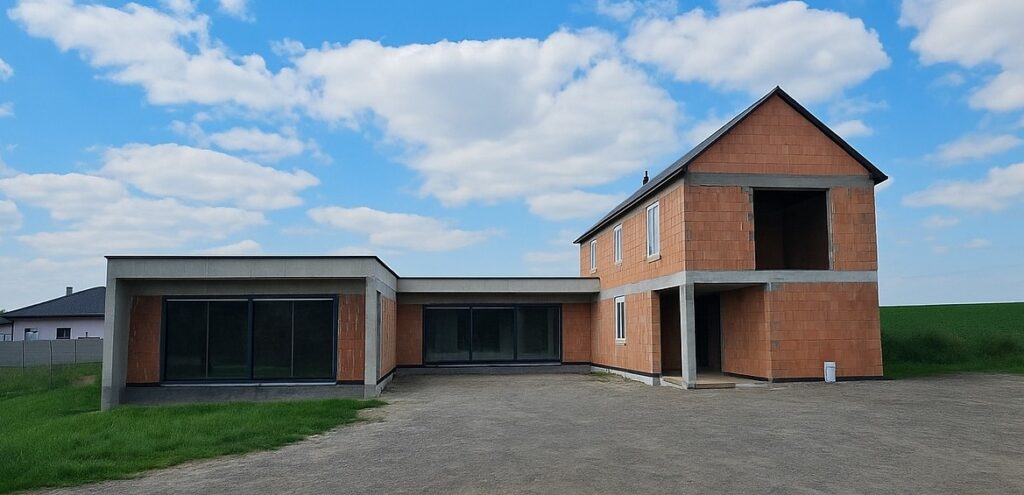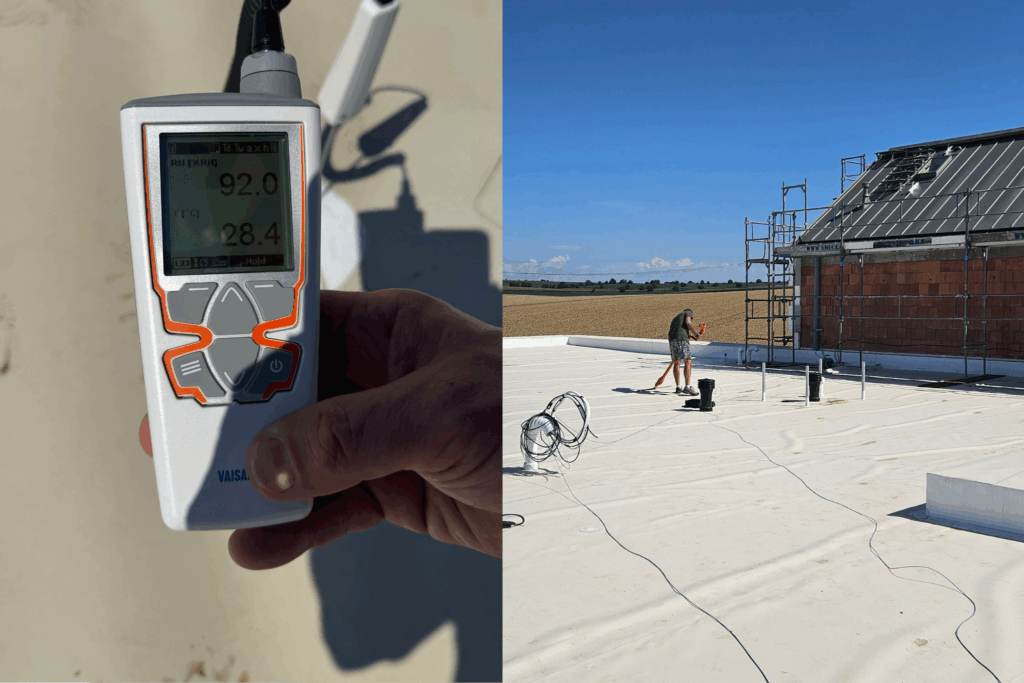New Roof, Hidden Problems: VILPE Sense Reveals Moisture and Membrane Cracks in a Newly Built Home

This case from Bystrocice, Czech Republic, demonstrates how the VILPE Sense leak detection system detected elevated humidity and membrane microcracks in a newly built roof. Over a two-month period, the sensors reported sustained high humidity (95–100%), which was verified on-site with a VAISALA HM42 moisture meter and electrical current-based membrane scanning. Condensation droplets and approximately 15 microcracks were identified, primarily at weld joints and corner seams. Based on these findings, targeted repairs, ventilation improvements, and continued monitoring were recommended. The case highlights VILPE Sense’s role in providing reliable, early warnings—even in new constructions—enabling preventive action before visible damage occurs.
Introduction
New buildings are often assumed to be free from hidden moisture issues. However, even with modern materials and meticulous construction, installation shortcomings can create conditions where moisture accumulates unnoticed.
In Bystrocice, Czech Republic, a large, modern single-family home was completed in April 2025. The house features a mixed roof structure with both pitched and flat sections, and a swimming pool is located directly beneath the flat roof. The flat roof, covering approximately 450 m², is built on a concrete structural deck topped with a vapor barrier. Above this lies hard glued EPS insulation, with thickness varying from 25 to 45 centimeters, and the roof is finished with a TPO membrane serving as the waterproofing layer.
In May the same year, 30 VILPE Sense leak detectors were installed across the flat roof to monitor the roof’s internal condition. Shortly after installation, the system began reporting consistently high humidity values, prompting further investigation. Although no visible signs of damage were present, the sensor data suggested that moisture was already present within the structure.

Approach and methodology
The investigation aimed to validate the elevated humidity readings and identify any early-stage defects potentially responsible for these readings. The process included:
- Spot-checks with a VAISALA HM42 moisture meter – recognized for high accuracy in building moisture measurements.
- Electrical current membrane scanning – to locate defects or discontinuities in the TPO waterproofing layer.
- Visual inspections – conducted at and around the sensor installation points.
- Review of historical sensor data – recorded by the local partner, Kokes.
All handheld readings were taken without creating new penetrations in the roof, ensuring minimal disturbance to the structure.

Findings
The VAISALA HM42 readings closely matched the VILPE Sense sensor data, confirming the accuracy of the system’s continuous monitoring. Localized condensation droplets were observed near some sensor positions. While these were not signs of active leaks, they demonstrated that moisture was accumulating within the roof build-up.
The electrical current membrane scan revealed approximately 15 microcracks in the TPO layer, most of them located at weld joints and corner seams—areas typically more susceptible to stress and movement. These micro-defects represent potential future ingress points if not addressed.
Recommendations and next steps
Based on the combined sensor and inspection data, the following actions were recommended:
- Repair identified membrane defects, with particular attention to welded seams and corner joints.
- Install VILPE Sense humidity control roof fans to enhance airflow within the insulation layers and assist drying.
- Incorporate moisture control into future roof modifications, such as terrace construction or decorative elements, to prevent trapping humidity.
Conclusion
This Bystrocice case demonstrates that even newly constructed roofs can conceal early-stage moisture issues and minor membrane defects. The VILPE Sense system provided timely and reliable data, enabling verification through independent measurements and targeted inspections.
By identifying risks at an early stage—before visible symptoms appeared—the building owner was able to take preventive measures to protect the roof’s integrity, avoid structural damage, and extend service life.
